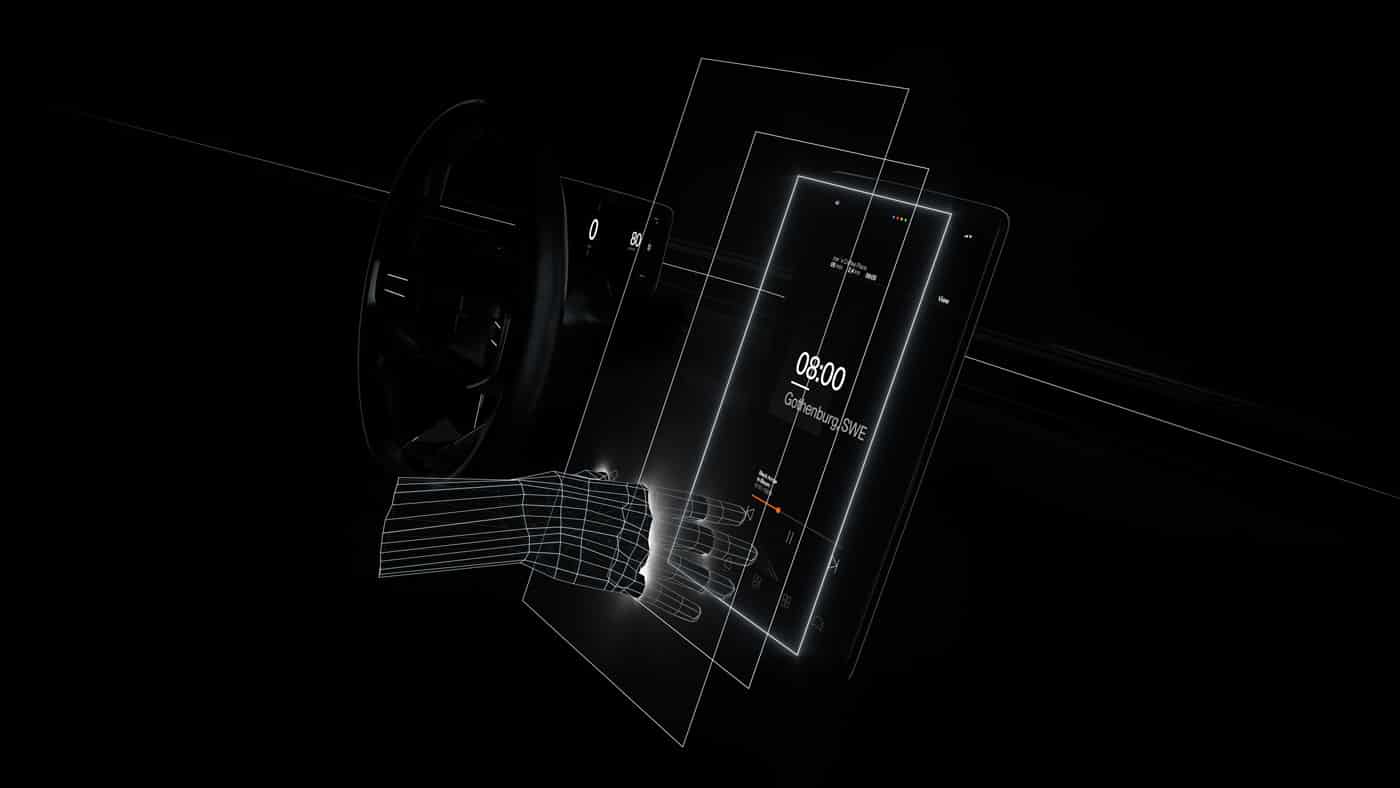

POLESTAR SHOWCASES THE FUTURE OF HMI
> Polestar and Google continue to collaborate to improve the future of in-car HMI
> Advances in personalisation and integration with vehicle safety functions will provide an even more seamless and natural in-car digital experience
Polestar will continue to evolve the user experience in its future vehicles through further collaboration with Google. Polestar 2 is the first vehicle on the market powered by Android with the Google Assistant, Google Maps and the Google Play Store built-in. Today, the Swedish electric performance car brand looks even further into the future.
“We already showed the world we take digital integration in our cars seriously and are open to collaborate with experts in these fields,” says Thomas Ingenlath, Polestar CEO. “Now we continue that story, sharing a vision that is even more in tune with the preferences of our individual customers. Building on the Android infotainment system in Polestar 2, our future systems will make life in our cars easier, safer and more fun.”
Polestar will continue to use Android as a platform to build a truly personalised and contextualised experience. This integration will open up new possibilities in the car, beyond the already available adjustment of mirrors, seats, climate and entertainment settings to the driver’s personal preferences.
The vision now imagines the complete vehicle environment automatically adjusting to the user’s personal preferences and last-used applications. Tailored information will be displayed based on the detected driver profile, enabled by the Polestar Digital Key, when the driver approaches. With the driver’s permission, the system could even proactively offer personalised planning according to driver habits or preferences, or conditions.


The Google Assistant will be an even more helpful co-pilot while driving, using advanced speech technology to expand to more languages, understand local accents and provide more personalised experiences. The future will build on current Google Assistant functionality in the Polestar 2, all of which is delivered in a natural conversational flow that improves over time, rather than from a list of pre-set options.
Entertainment will become more relevant, not only when driving. Video streaming from popular apps and services will be made available as a convenient solution for occupants when the vehicle is parked and during charging.
Avoiding information overload is also key to Polestar’s offering and a further expression of the brand’s minimalist approach. Polestar will implement advanced eye-tracking and proximity sensors to deliver information in a controlled manner. Screens will alter their brightness and content based on conditions and reactions of the driver. Dimmed displays will increase intensity when users glance in their direction, and the approach of a user’s hand will adapt the presented controls. The system will also warn users if they are spending too much time looking at the screen rather than the road ahead.
Polestar will continue to partner with Google on advanced safety, as demonstrated by the fusion of Advanced Driver Assistance Systems (ADAS) and Google Maps. Integrated ADAS means the vehicle will use detailed map information to promote safer manoeuvres on the road.
VOLVO CARS AND CHINA UNICOM COLLABORATE ON 5G COMMUNICATION
Volvo Cars and leading telecom provider China Unicom are joining forces on using 5G next generation ...
CERENCE INTRODUCES NEW FEATURES IN CERENCE DRIVE
New capabilities such as enhanced voice recognition and synthetic speech serve as the foundation for a safer, more ...
5GAA LIVE DEMOS SHOW C-V2X AS A MARKET REALITY
Smart mobility technology is a reality today, with ‘Cellular Vehicle-to-Everything’ (C-V2X) allowing connected vehicles to ...
THE LATEST ROBOSENSE LIDAR PERCEPTION SOLUTION WILL SUPPORT ROBO TAXI DEVELOPMENT
A Developed And Complete RS-Fusion-P5 Was Launched In Markets ...
JAGUAR LAND ROVER UNVEILS FUTURE OF URBAN MOBILITY
Jaguar Land Rover has today unveiled the bold new concept vehicle, Project Vector, as part of the company’s Destination ...
NOKIA SUPPORTING SOFTBANK CORP. - THE WORLD-FIRST 5G CONNECTED CAR TEST
Nokia provides end-to-end 5G portfolio to SoftBank Corp. to become first ...
HYUNDAI & KIA MAKE STRATEGIC INVESTMENT IN ARRIVAL
Hyundai Motor Company and Kia Motors Corporation today announced a strategic investment of €100 million ...
Every time we hit the road, we’re faced with tradeoffs: Should I spend 30 bucks, or 30 minutes of my time? Should I run that red light and shave a few minutes ...








